Rev Sales Explained: What You Need to Know in 2025
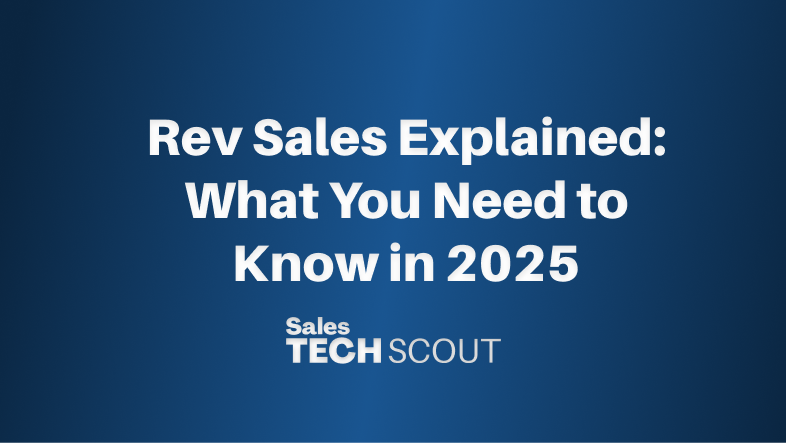

Introduction
The B2B sales landscape has evolved dramatically over the past few years, and 2025 marks a pivotal moment for revenue operations.
As companies face increasing pressure to optimize their sales processes, reduce customer acquisition costs, and maximize lifetime value, rev sales (or RevOps) has emerged as a critical methodology that's reshaping how organizations approach revenue generation.
Gone are the days when sales, marketing, and customer success teams operated in silos.
Today's most successful B2B companies are adopting rev sales principles to create unified revenue engines that drive predictable growth. But what exactly is rev sales (or RevOps), and why is it becoming essential for modern B2B teams?
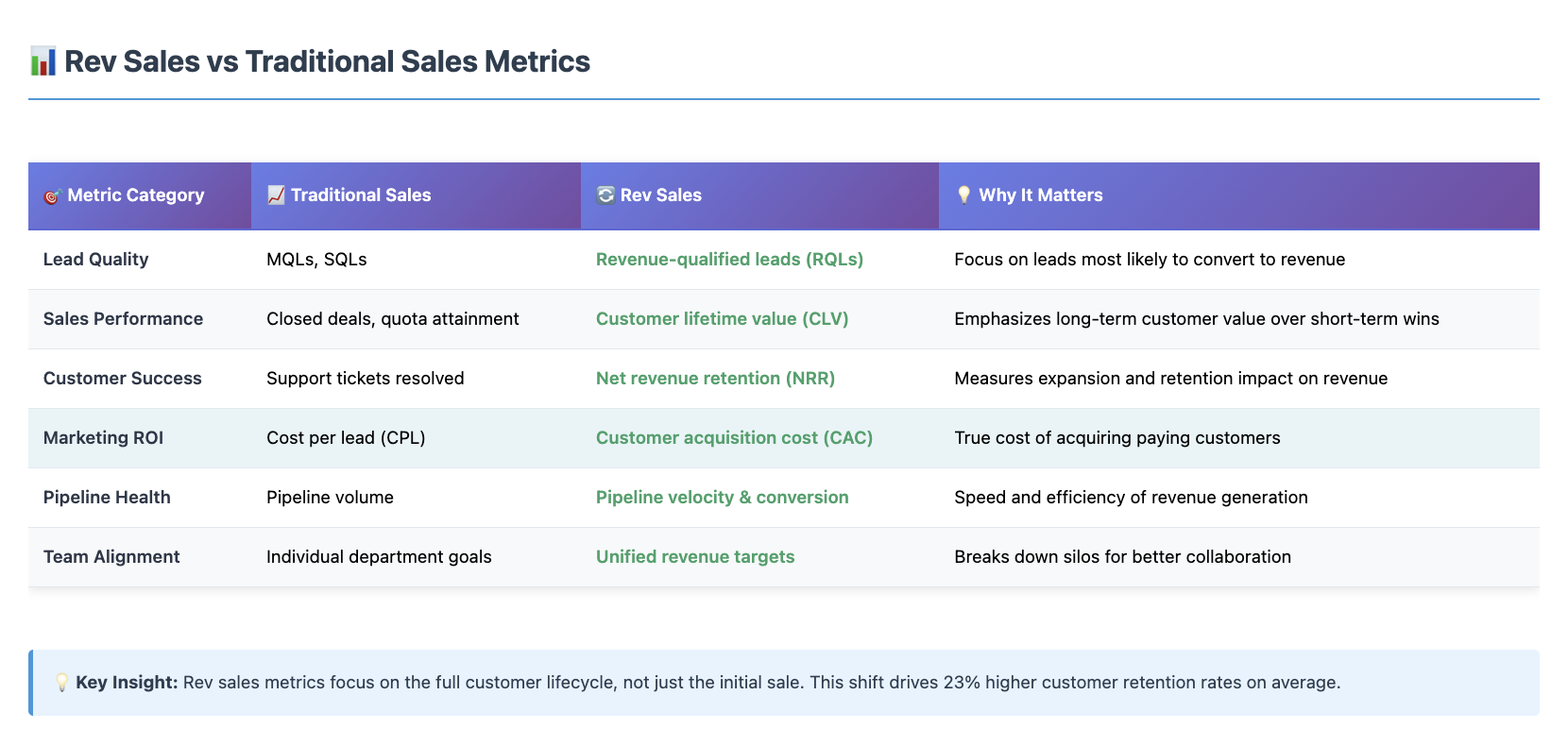
What is Rev Sales?
Rev sales (short for revenue sales or RevOps) is a strategic approach that aligns all revenue-generating activities across sales, marketing, and customer success teams under a unified framework.
Unlike traditional sales methodologies that focus primarily on closing deals, rev sales emphasizes the entire customer lifecycle, from initial awareness through expansion and renewal.
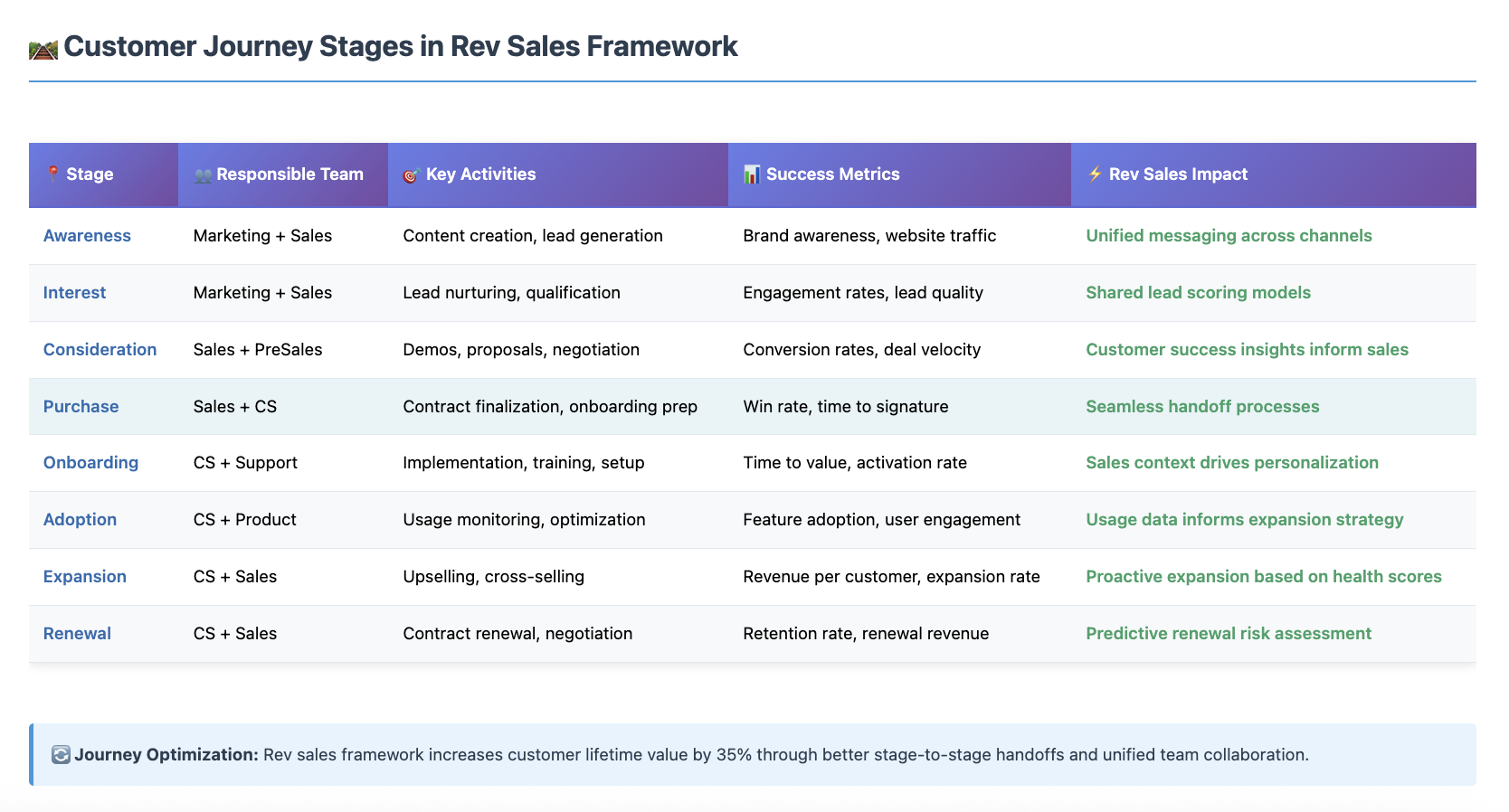
The Origin and Evolution
The concept of rev sales emerged from the broader Revenue Operations (RevOps) movement that gained momentum in the early 2020s.
As B2B companies recognized the limitations of departmental silos, they began seeking ways to create more cohesive revenue strategies. Rev sales represents the practical application of RevOps principles at the team level.
Key characteristics of rev sales include:
- Unified data and metrics across all revenue-generating functions
- Shared accountability for revenue outcomes
- Customer-centric processes that prioritize lifetime value
- Technology stack integration that eliminates data silos
- Cross-functional collaboration throughout the customer journey
How to Apply Rev Sales in B2B Teams
Implementing rev sales requires a fundamental shift in how B2B teams structure their operations and measure success. Here's how to build an effective rev sales framework:
Core Rev Sales Strategies
1. Implement Unified Revenue Metrics
Rather than measuring marketing qualified leads (MQLs) and sales qualified leads (SQLs) in isolation, rev sales teams focus on revenue-centric metrics like:
- Customer acquisition cost (CAC) across all channels
- Revenue per customer by source
- Time to value for new customers
- Net revenue retention rates
2. Create Integrated Customer Journeys
Rev sales strategy demands seamless handoffs between teams. This includes:
- Marketing nurturing prospects through qualified opportunities
- Sales teams sharing customer insights with success teams
- Customer success proactively identifying expansion opportunities
- Support teams contributing to retention and upsell efforts
3. Establish Revenue Accountability
Each team member understands their contribution to overall revenue goals, not just their departmental metrics. This creates shared ownership and reduces friction between traditionally separate functions.
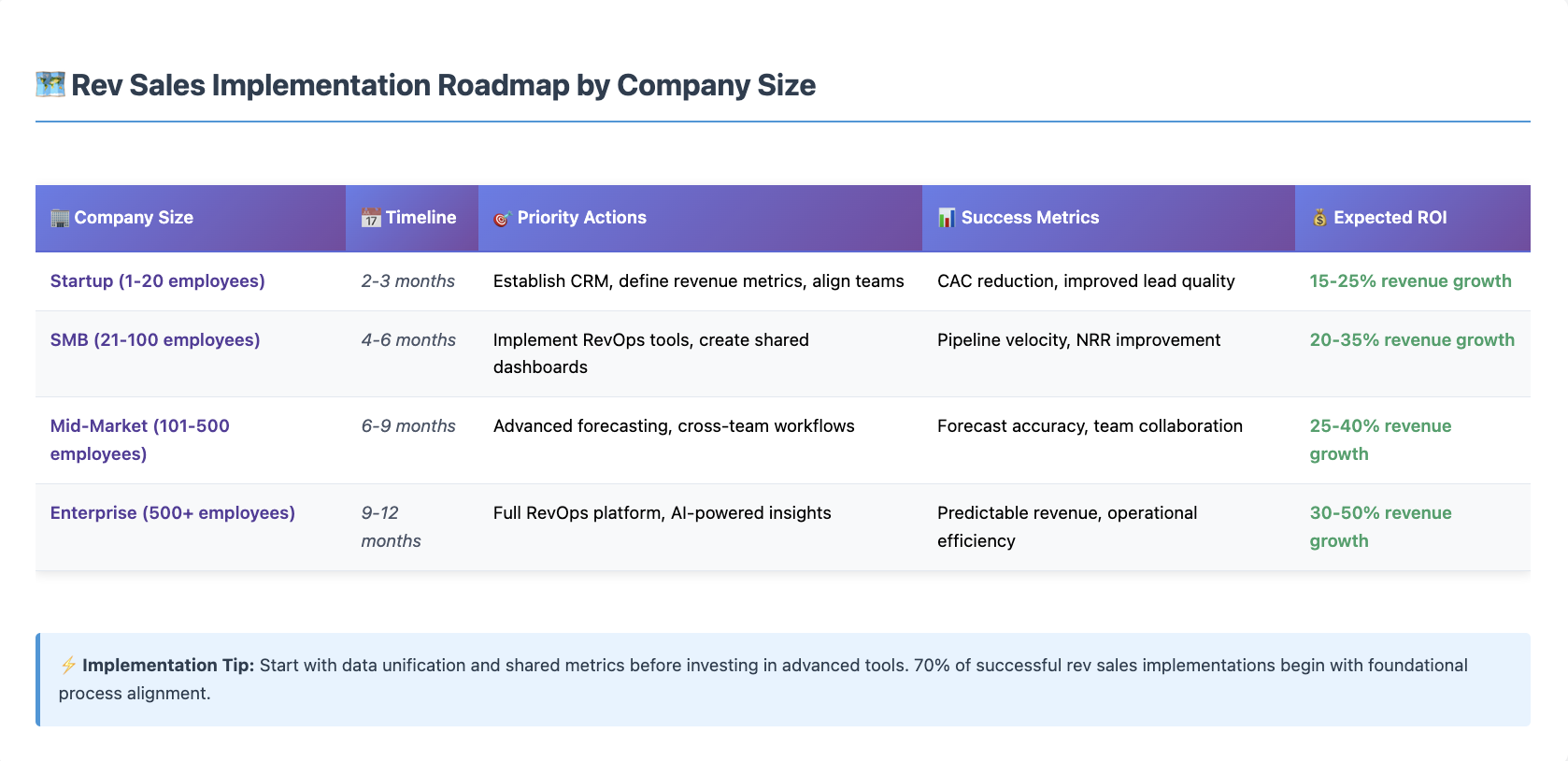
Cross-Functional Alignment: The Foundation of Rev Sales
Successful rev sales implementation requires tight coordination between three core functions:
Sales Teams: Focus on qualified lead conversion while maintaining visibility into the full customer lifecycle. Sales reps become consultative partners who understand long-term customer value, not just immediate deal closure.
Customer Success (CS) Teams: Proactively identify expansion opportunities and renewal risks. CS teams share insights about customer health and usage patterns that inform both sales and marketing strategies.
Operations Teams: Serve as the backbone of rev sales by maintaining data integrity, process optimization, and technology integration. Ops teams ensure that all revenue-generating activities are properly tracked and analyzed.
Tools and Comparisons
The right technology stack is crucial for rev sales success. Here's a comprehensive comparison of leading rev sales tools:
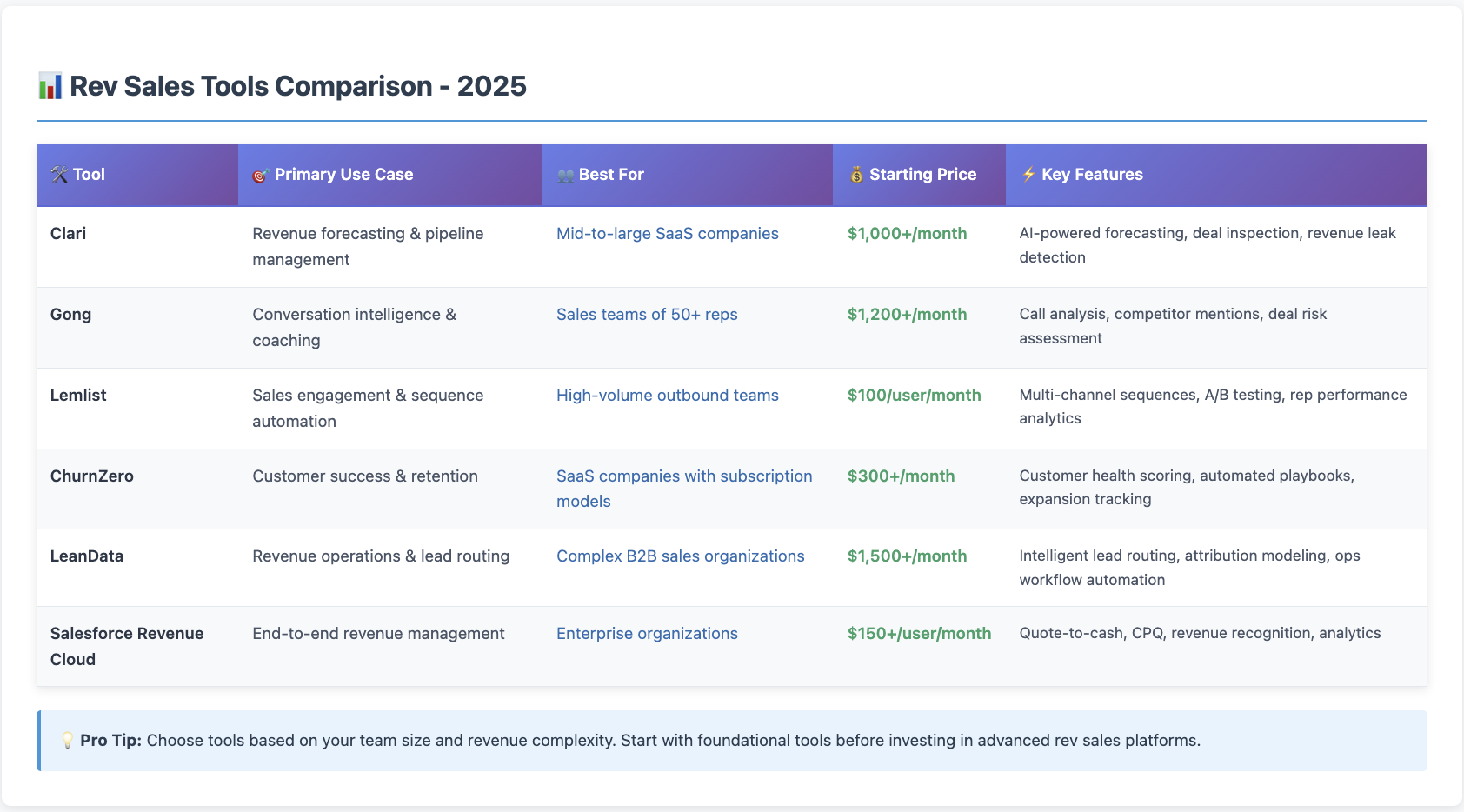
You can try those tools here:
Clari
Tool Recommendations by Team Type
Early-Stage Startups (10-50 employees):
Start with foundational tools like HubSpot CRM combined with a simple customer success platform. Focus on establishing clean data practices before investing in advanced rev sales tools.
Growth-Stage Companies (50-200 employees):
Implement conversation intelligence (Gong) and sales engagement tools (Lemlist) to scale your rev sales processes. Add customer success automation with platforms like ChurnZero.
Enterprise Organizations (200+ employees):
Deploy comprehensive revenue operations platforms like Clari for forecasting and LeanData for complex lead routing. Consider Salesforce Revenue Cloud for end-to-end revenue management.
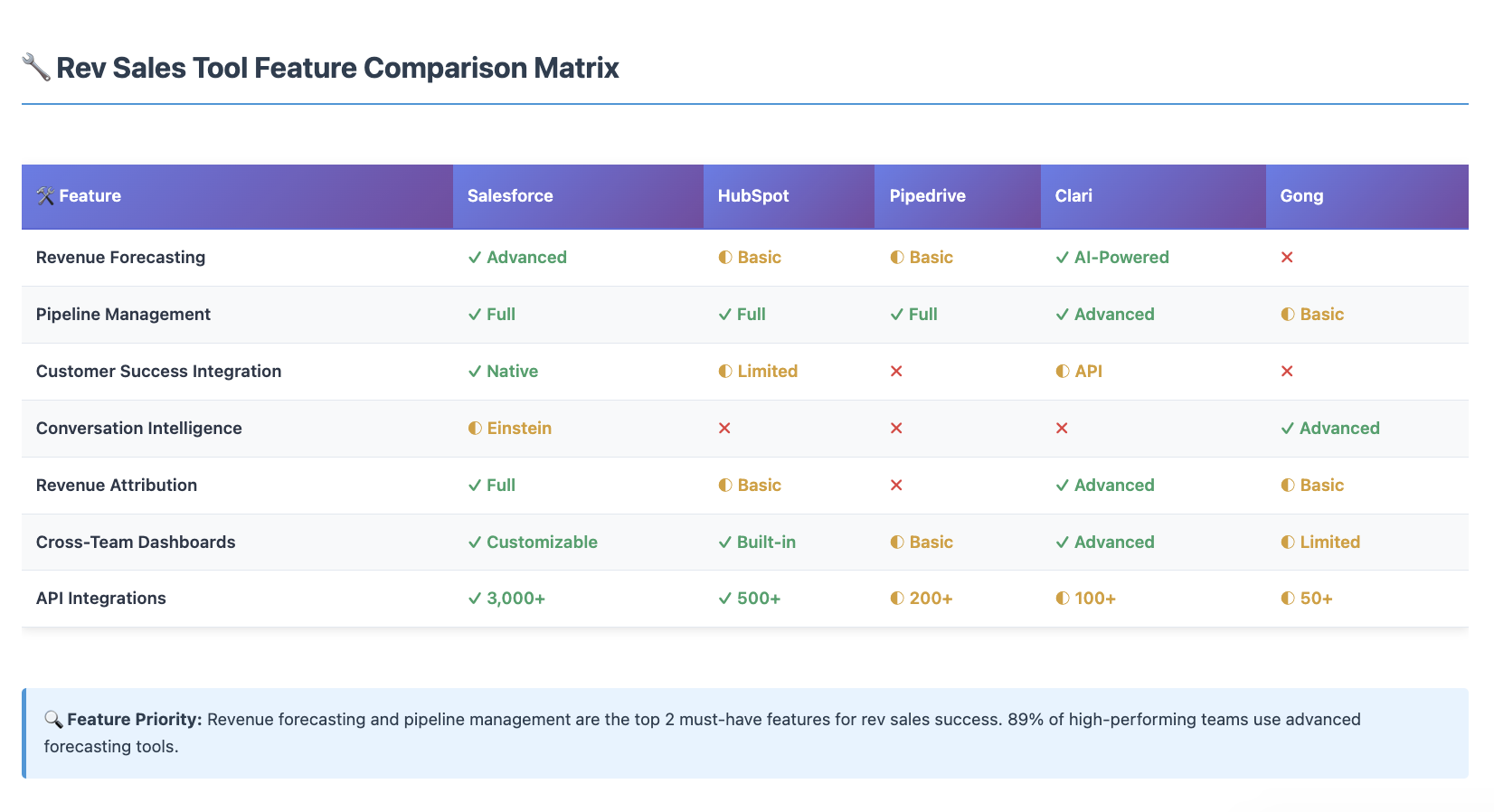
Real-World Examples of Rev Sales in Action
Example 1: SaaS Company - Zendesk's Revenue Transformation
Zendesk implemented rev sales principles to break down silos between their sales and customer success teams. Their approach included:
Strategy: Created unified customer health scores that both sales and CS teams could access and act upon.
Implementation: Sales reps began proactively sharing customer usage data with CS teams during handoffs, while CS teams identified expansion opportunities and fed them back to sales.
Results: 23% increase in net revenue retention and 18% reduction in customer churn within 12 months.
Key Takeaway: Rev sales tools enabled Zendesk to treat customer success as a revenue-generating function, not just a support function.
Example 2: Marketing Agency - Wpromote's Client Lifecycle Optimization
Wpromote, a digital marketing agency, adopted rev sales strategy to improve client retention and expand account values:
Strategy: Integrated their project management systems with client success metrics to identify expansion opportunities earlier in the engagement.
Implementation: Account managers began using rev sales tools to track client performance metrics alongside project deliverables, enabling proactive recommendations for additional services.
Results: 31% increase in average client lifetime value and 40% improvement in client retention rates.
Key Takeaway: Rev sales examples show that even service-based businesses can benefit from revenue-focused alignment between delivery and growth teams.
[IMAGE PLACEHOLDER: a before-and-after comparison showing traditional siloed sales vs. integrated rev sales approach]
Example 3: B2B Tech Company - Snowflake's Consumption-Based Revenue Model
Snowflake leveraged rev sales principles to optimize their consumption-based pricing model:
Strategy: Aligned sales, customer success, and technical teams around customer usage patterns and expansion signals.
Implementation: Used rev sales tools to track customer data consumption patterns and automatically trigger expansion conversations when usage approached plan limits.
Results: Achieved 158% net revenue retention rate, with existing customers driving the majority of revenue growth.
Key Takeaway: Rev sales strategy proves especially powerful for companies with consumption-based or usage-dependent revenue models.
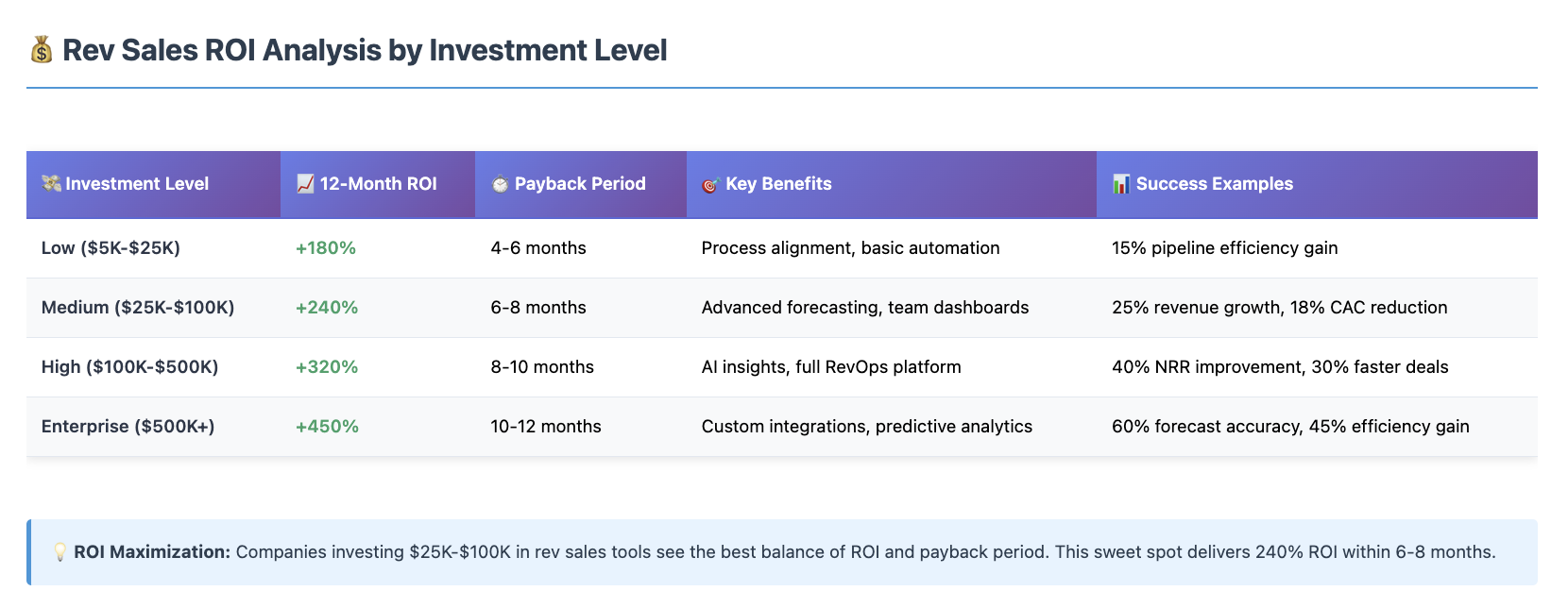
Conclusion
Rev sales represents more than just a methodology, it's a fundamental shift toward customer-centric revenue generation that's becoming essential for B2B success in 2025. Companies that fail to adopt rev sales principles risk falling behind competitors who can more effectively align their revenue-generating functions.
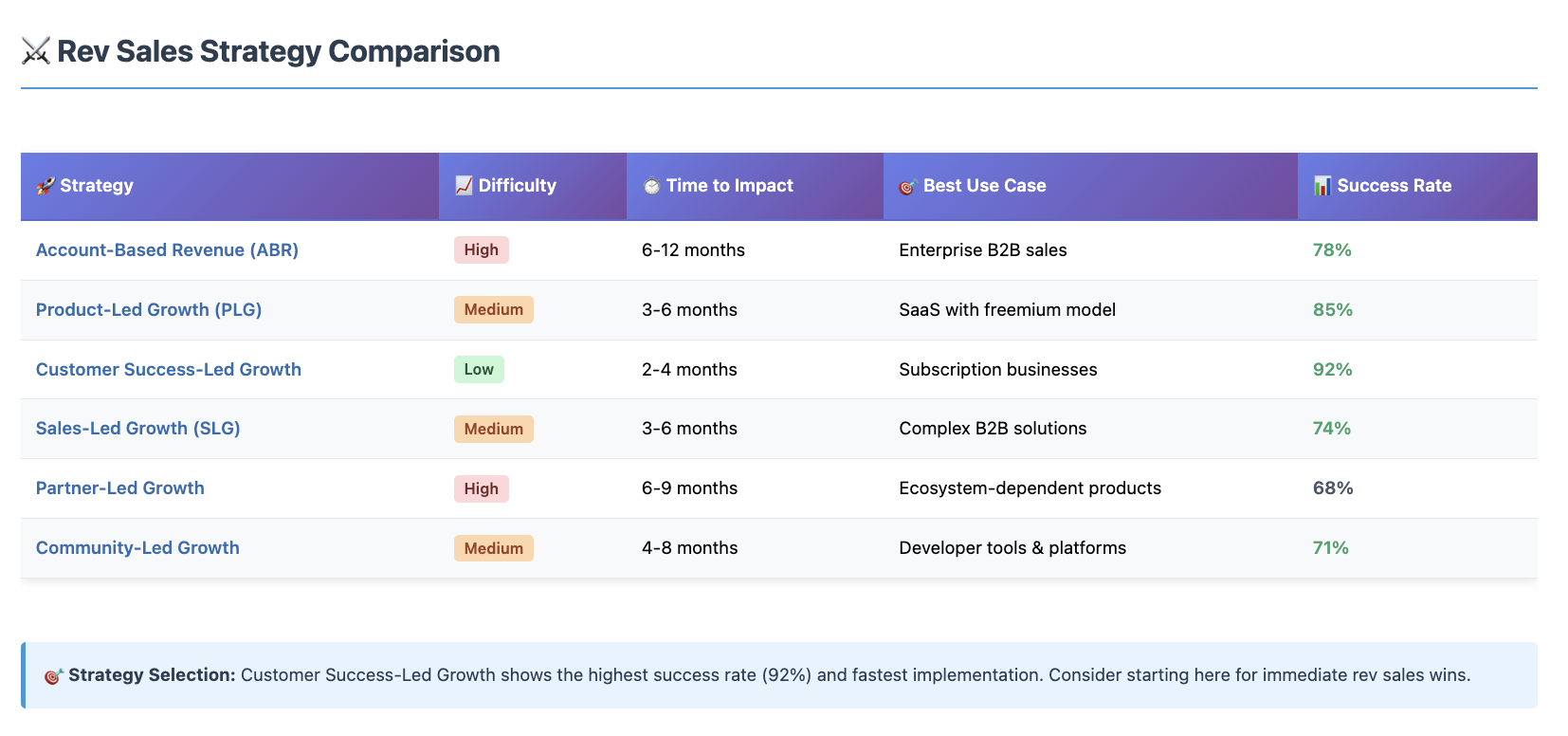
Who should implement rev sales now:
- B2B SaaS companies looking to improve net revenue retention
- High-growth startups seeking to scale revenue operations efficiently
- Enterprise organizations with complex sales processes requiring better coordination
- Service-based businesses wanting to increase client lifetime value
The question isn't whether your organization should adopt rev sales, it's how quickly you can implement it. Companies that begin their rev sales transformation today will be better positioned to navigate the increasingly competitive B2B landscape of 2025 and beyond.
Start by auditing your current revenue operations, identifying areas where departments work in silos, and selecting the right rev sales tools for your team size and industry. The investment in rev sales strategy will pay dividends in improved customer satisfaction, higher retention rates, and more predictable revenue growth.
Subscribe to Our Newsletter
To Never Miss a Thing

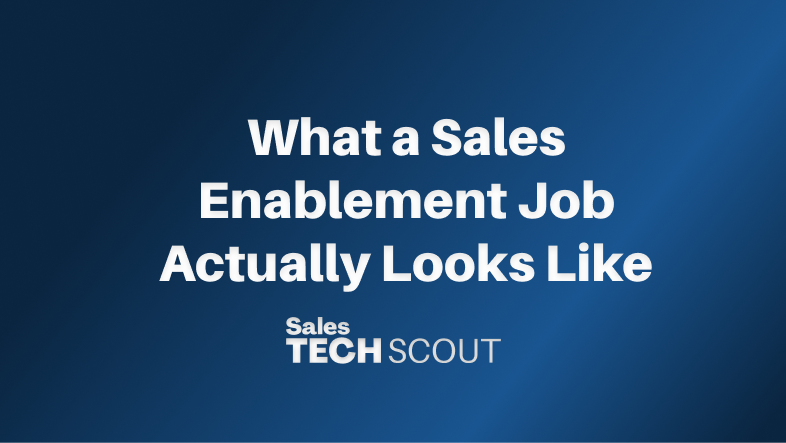




.avif)


